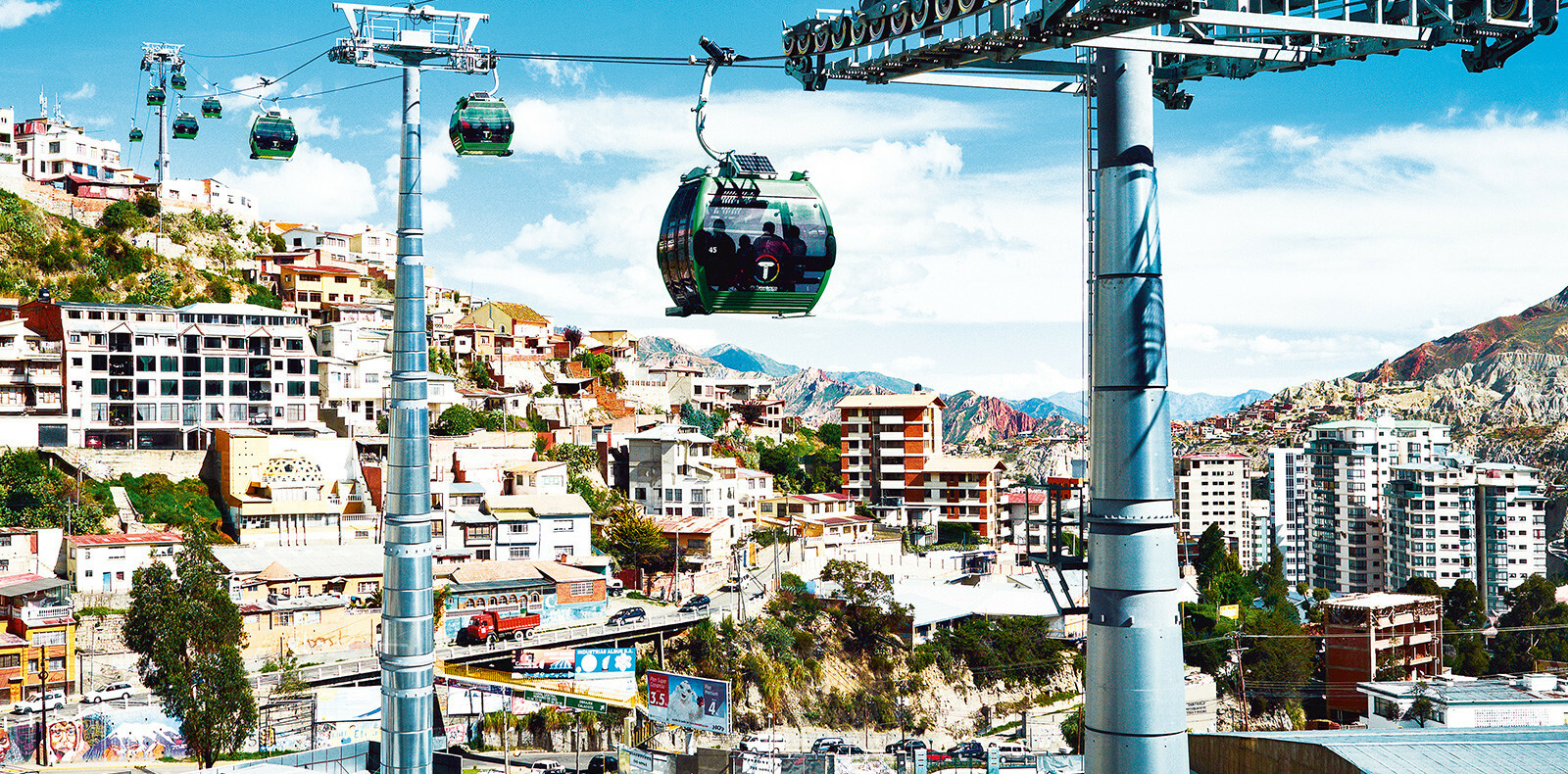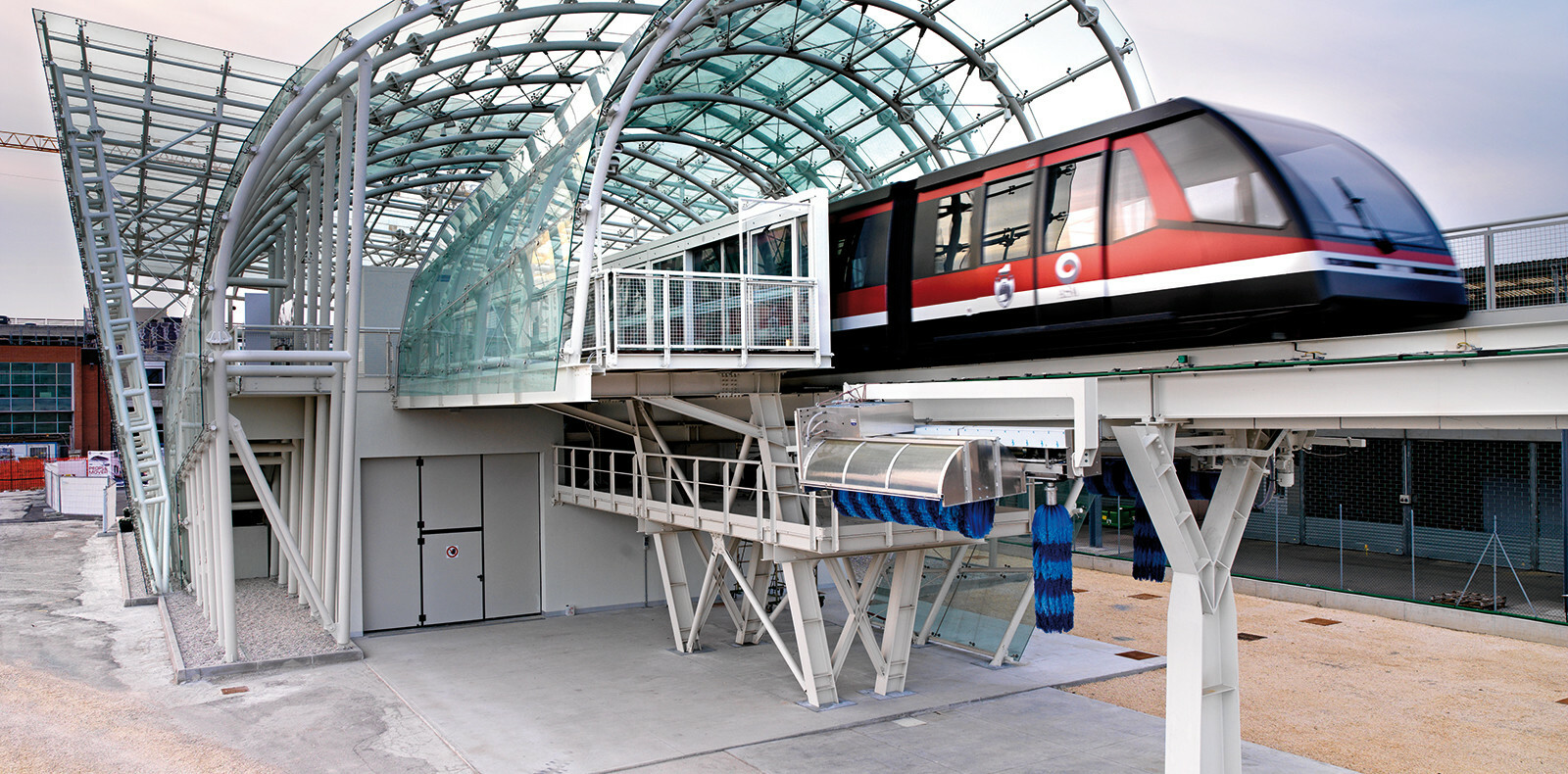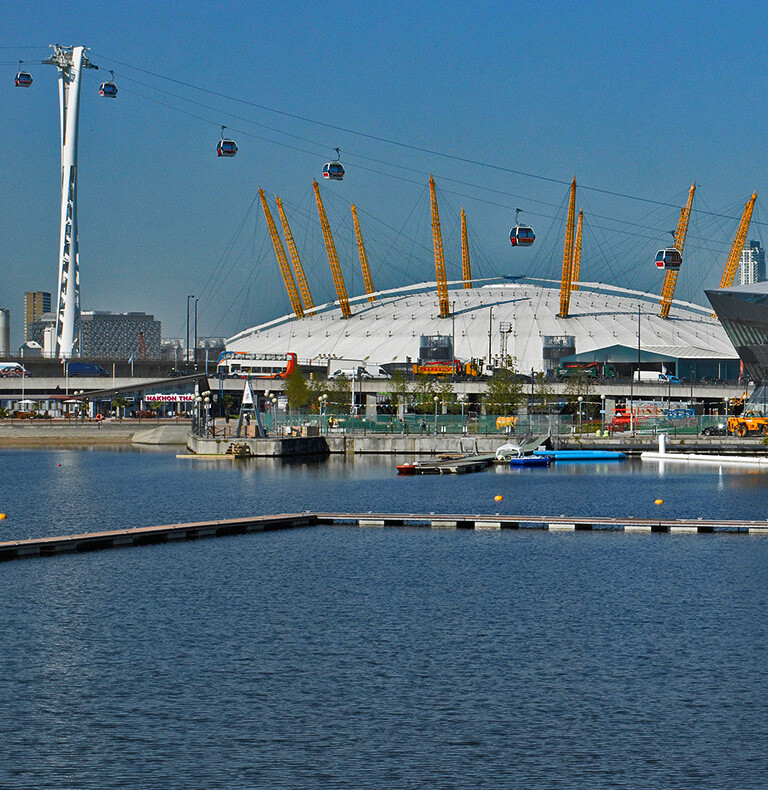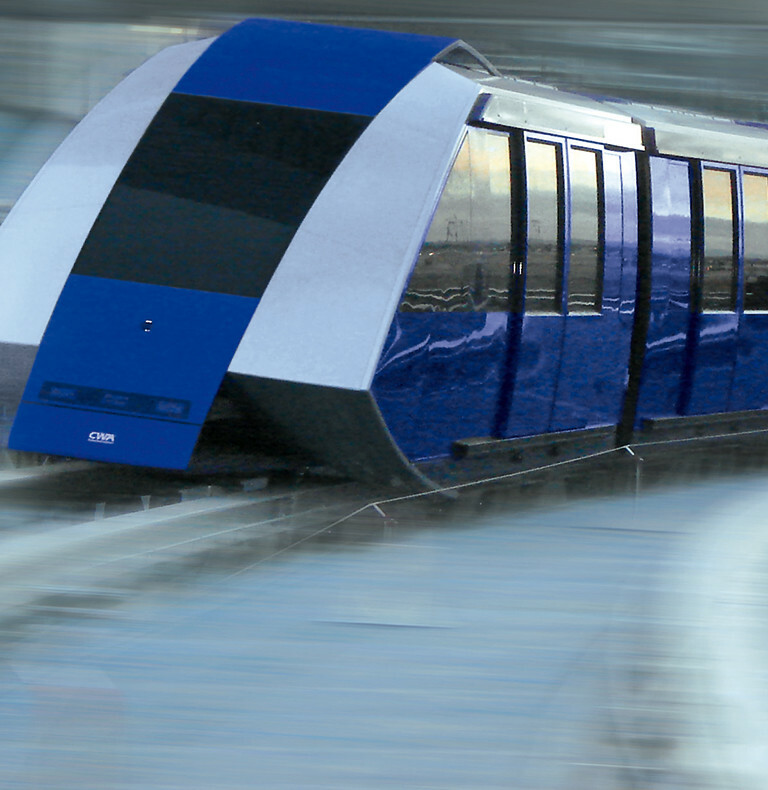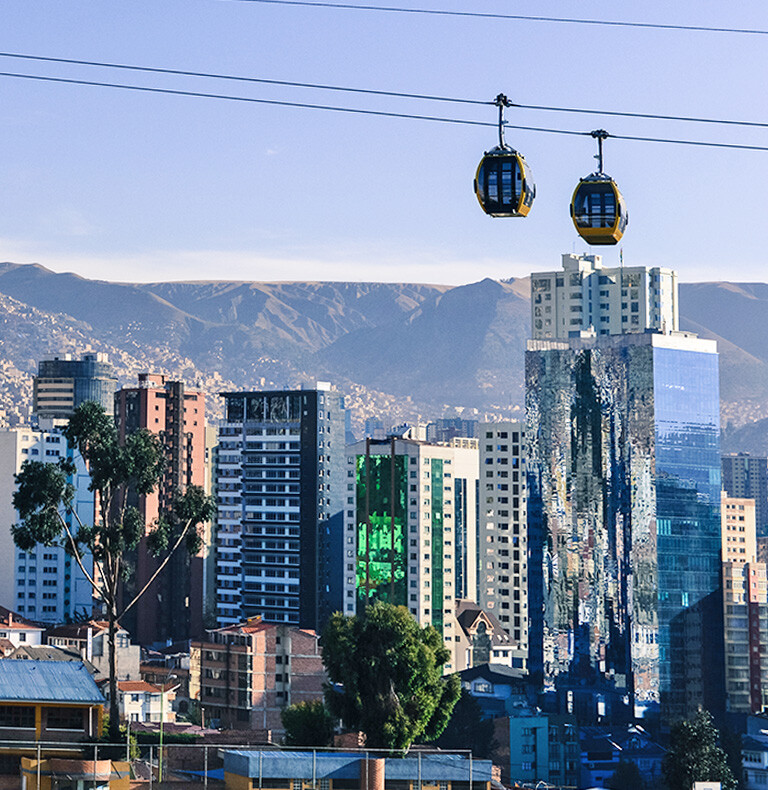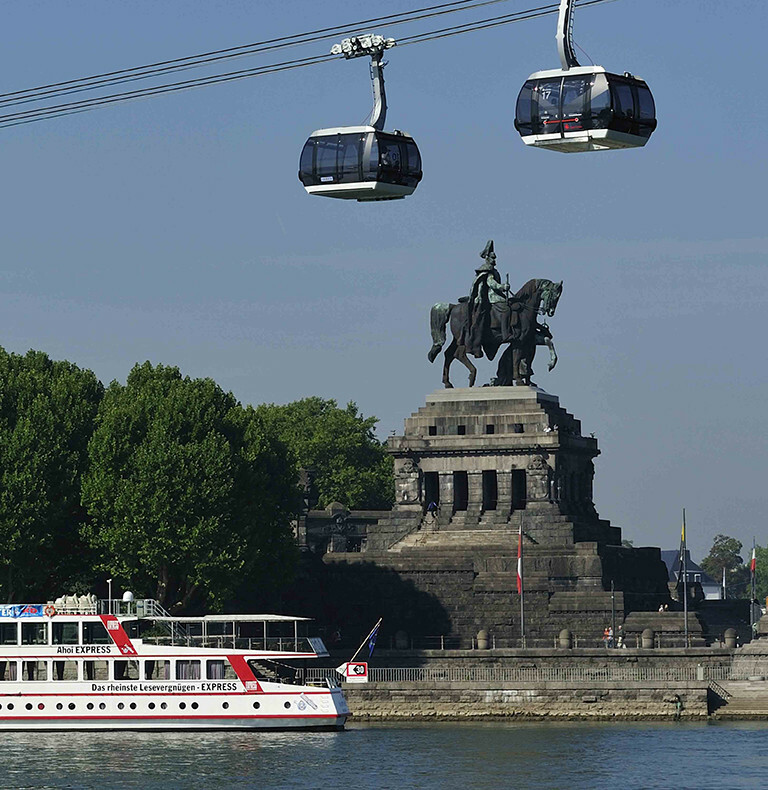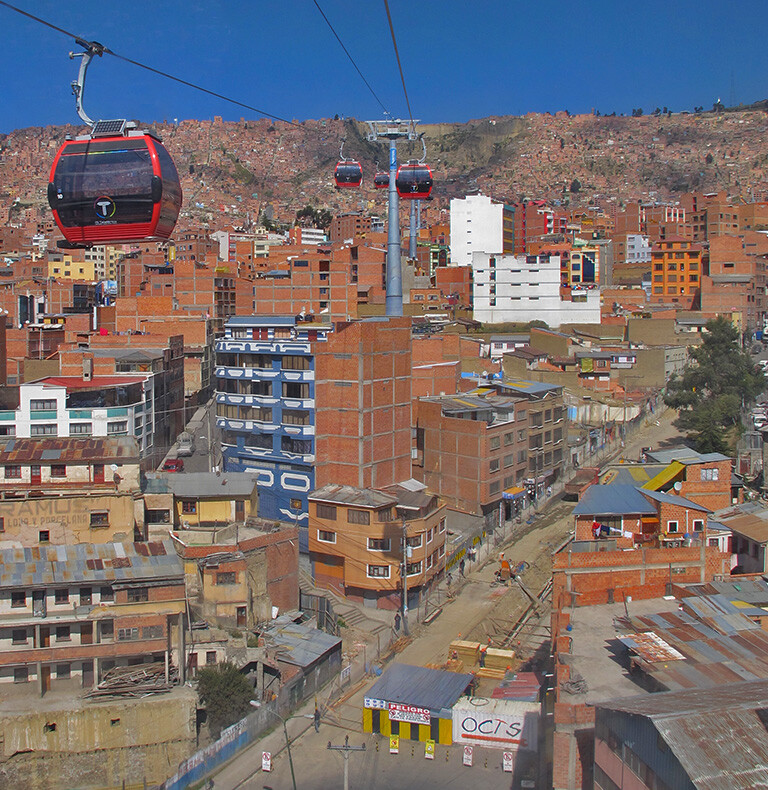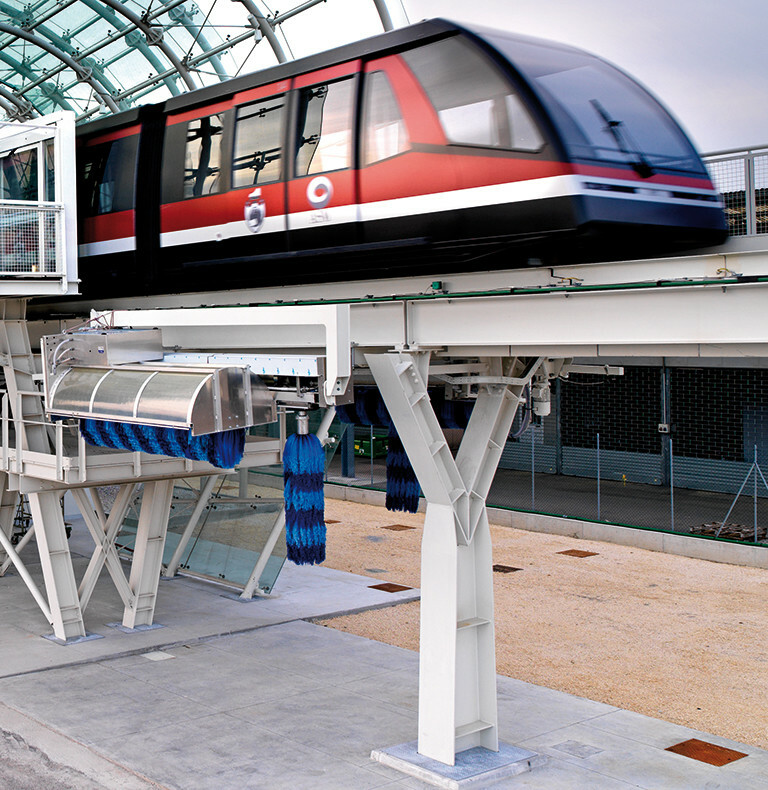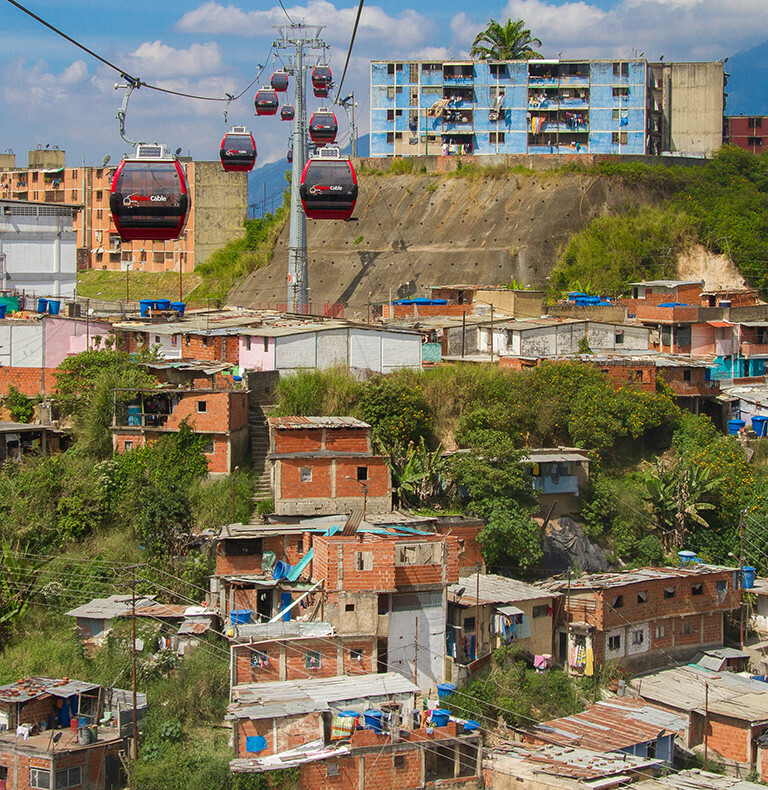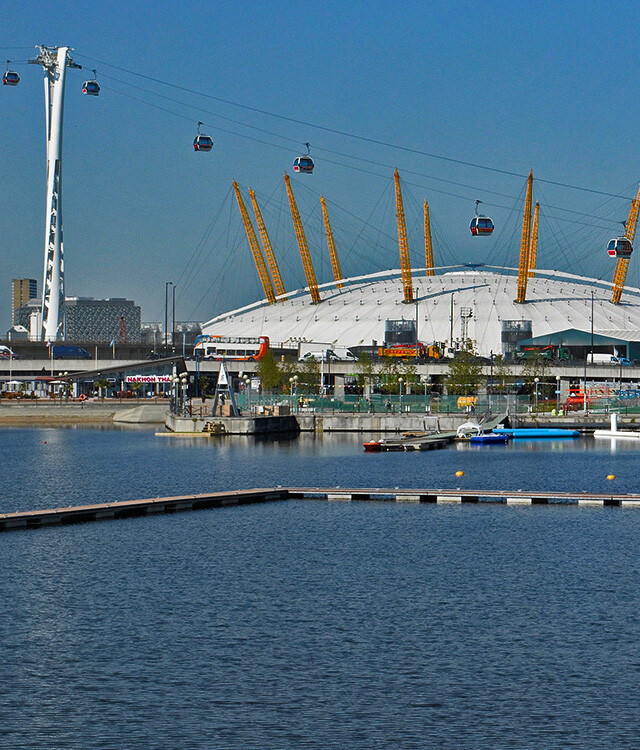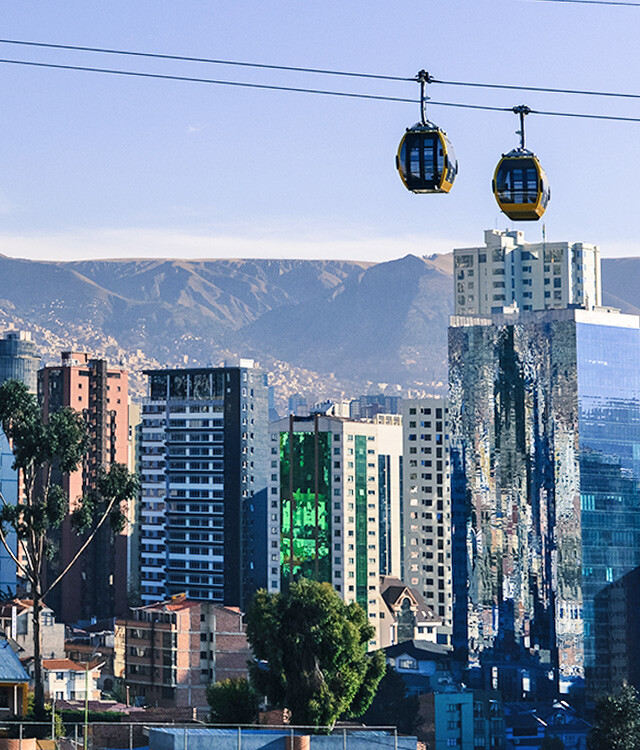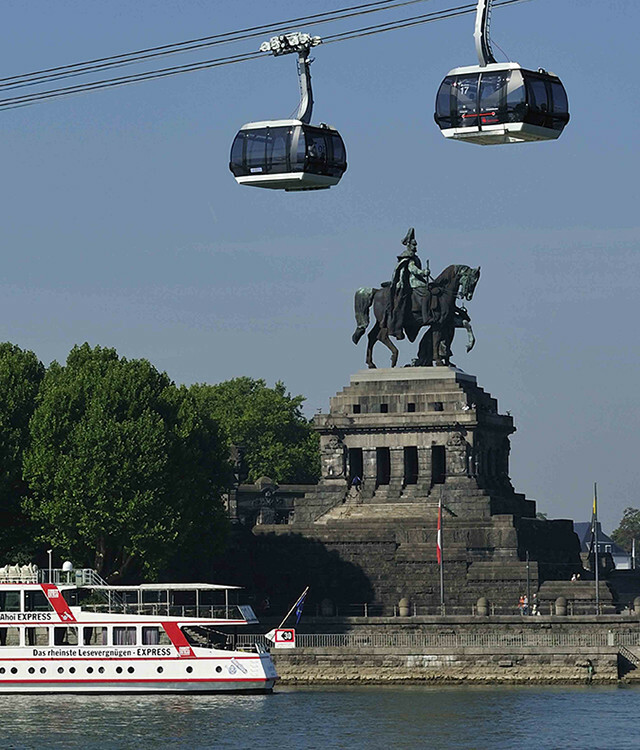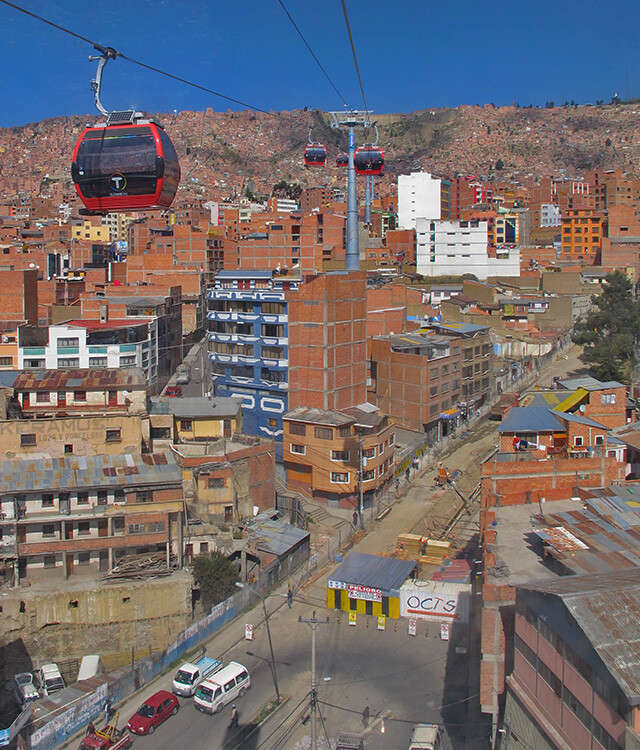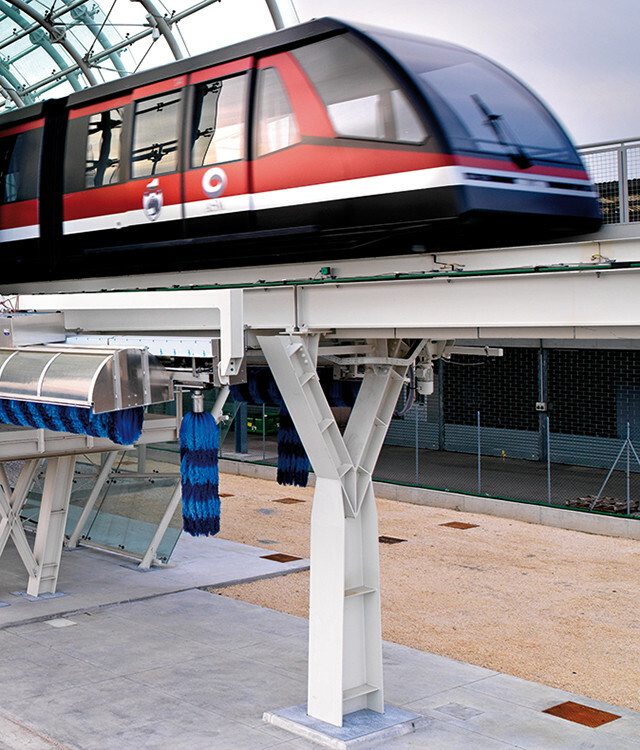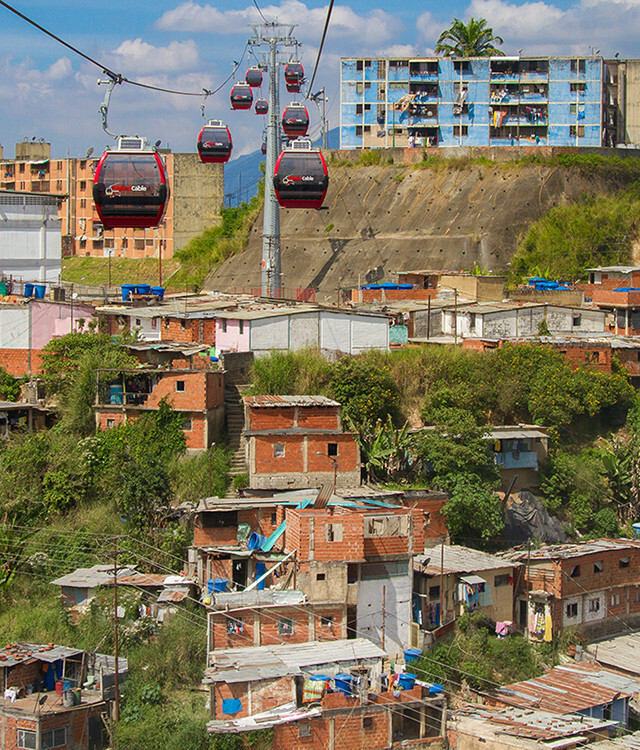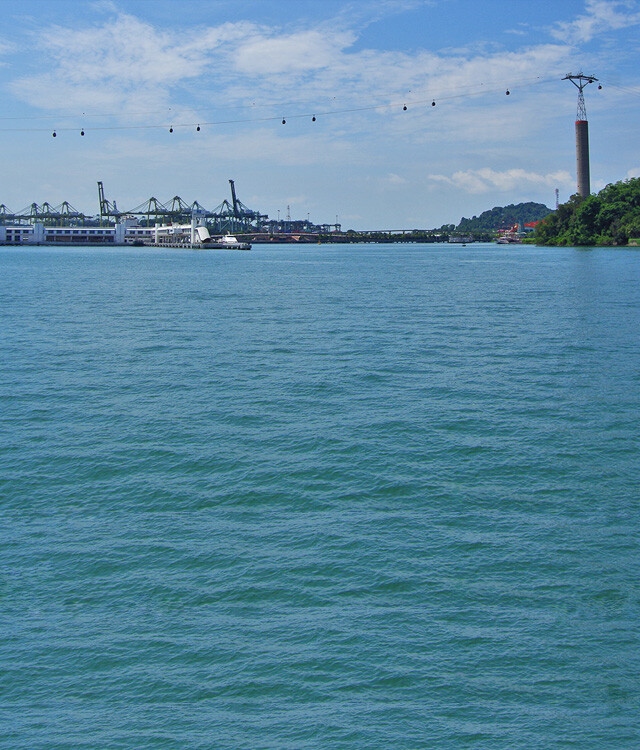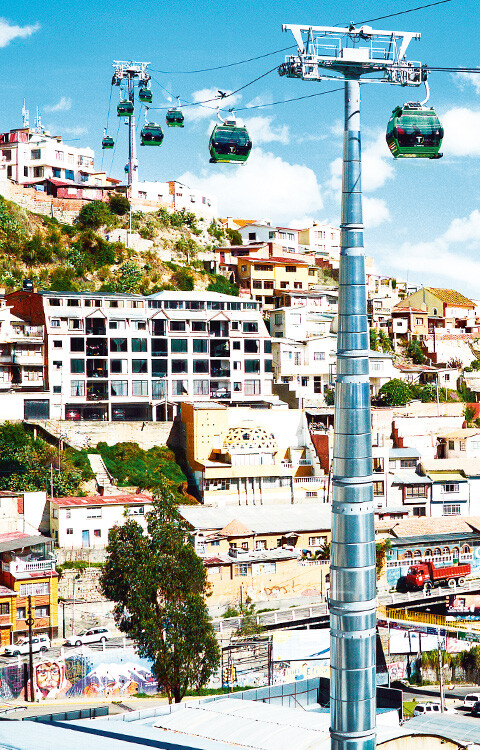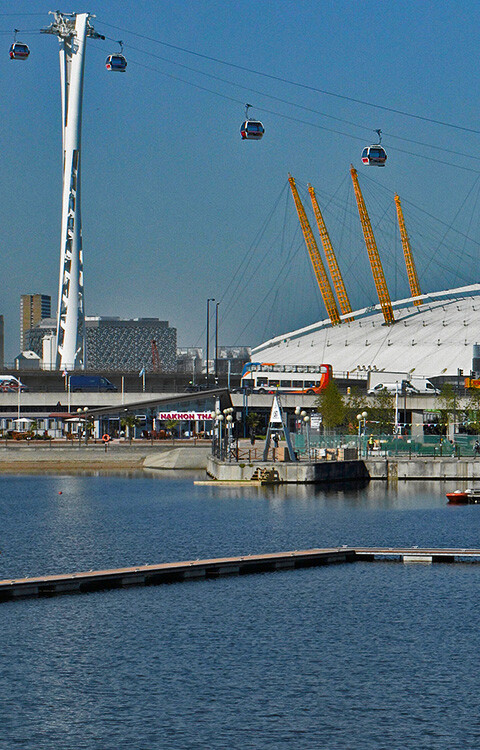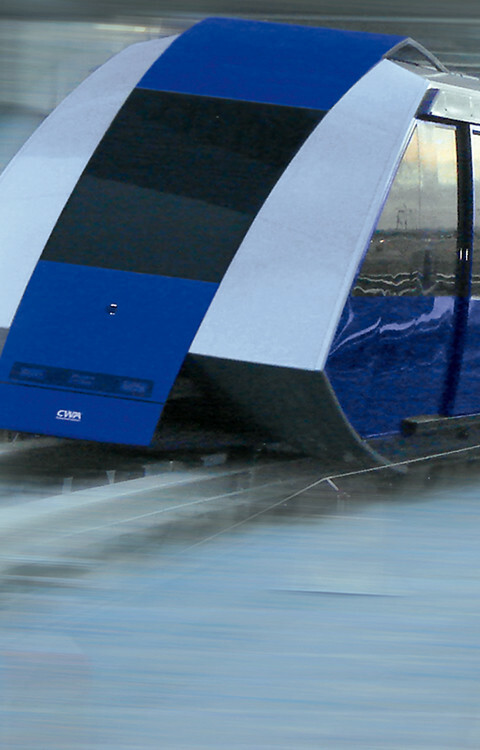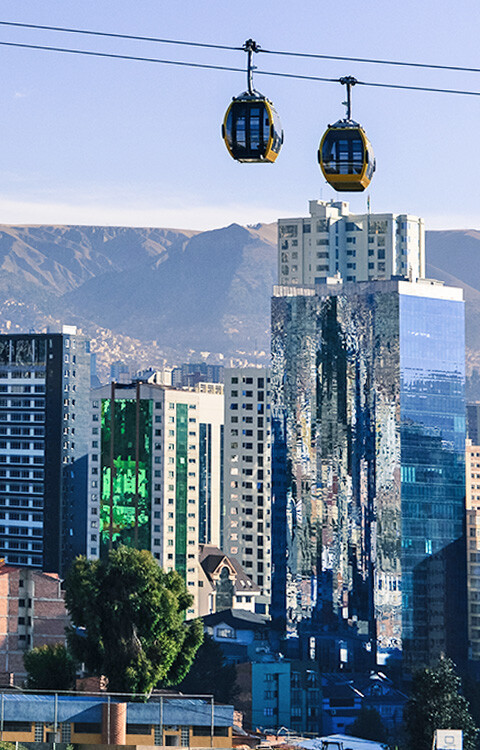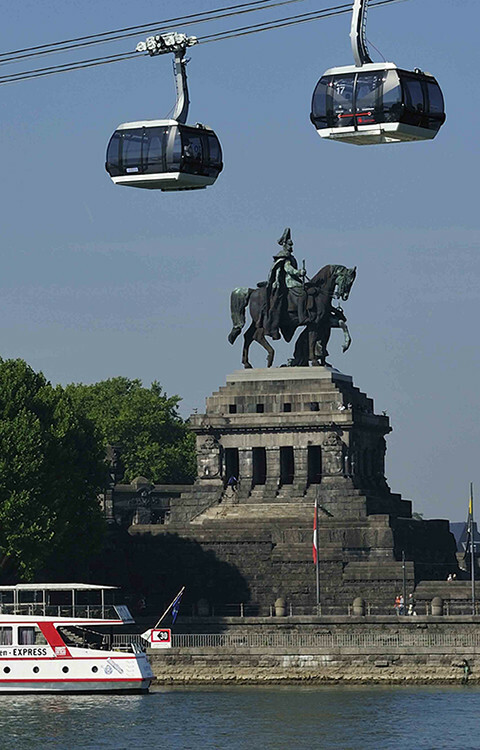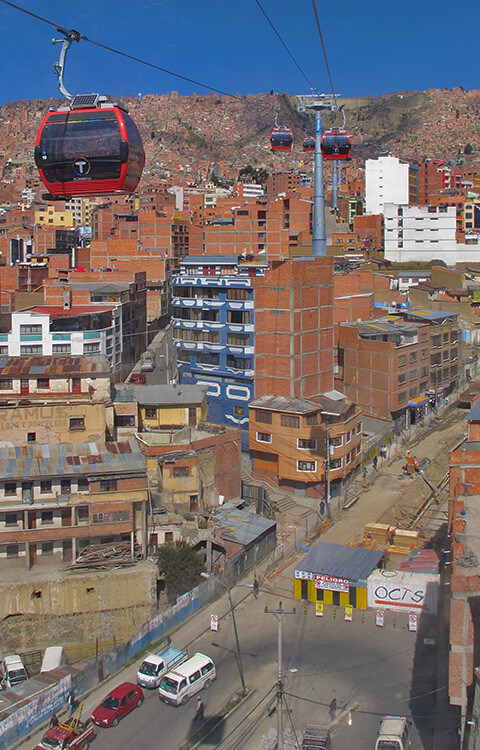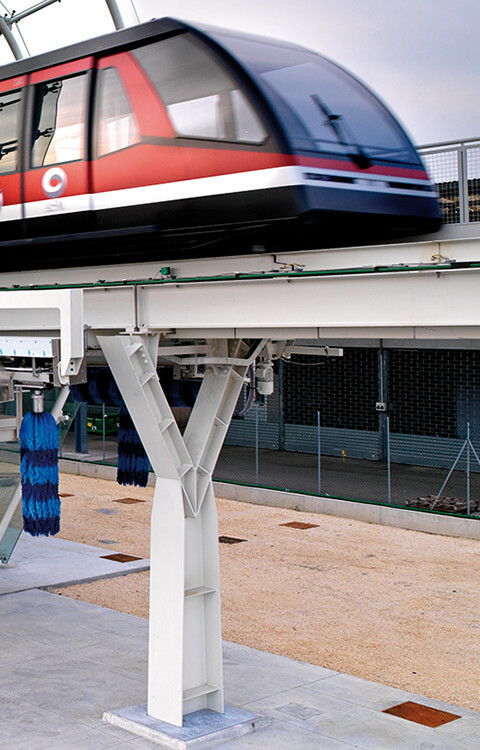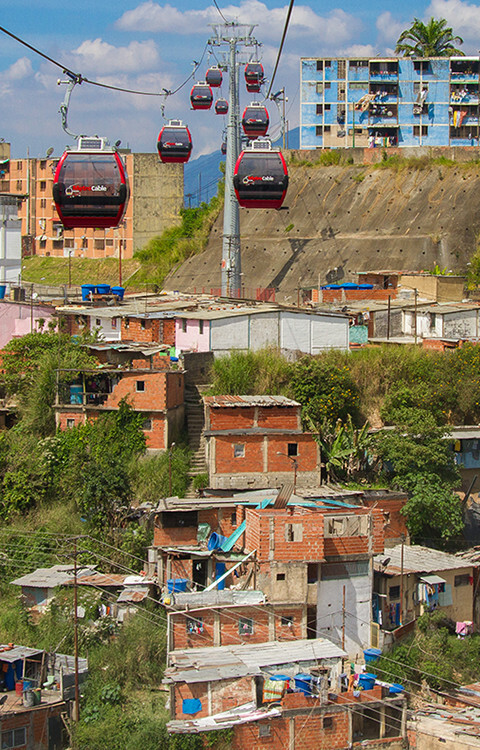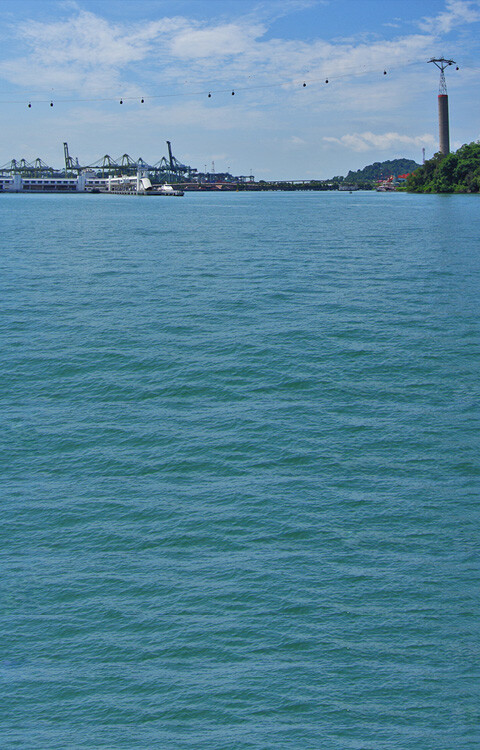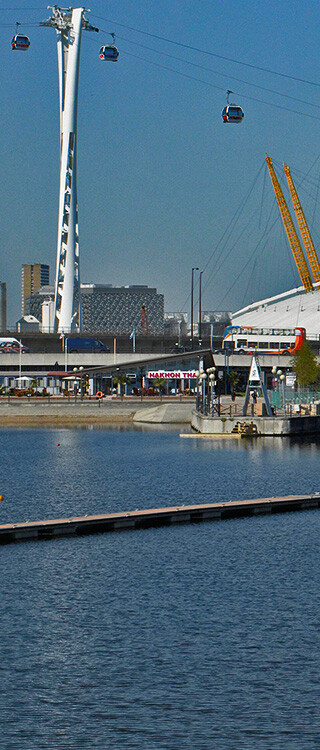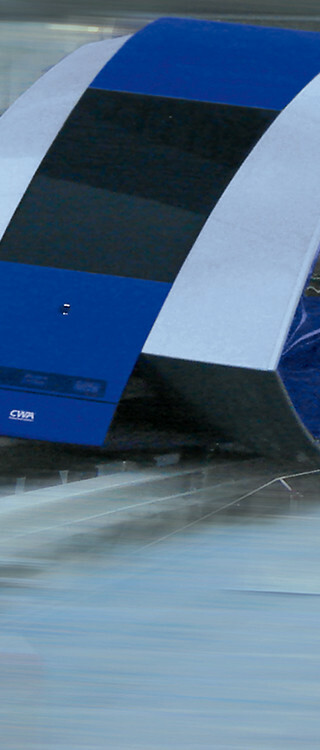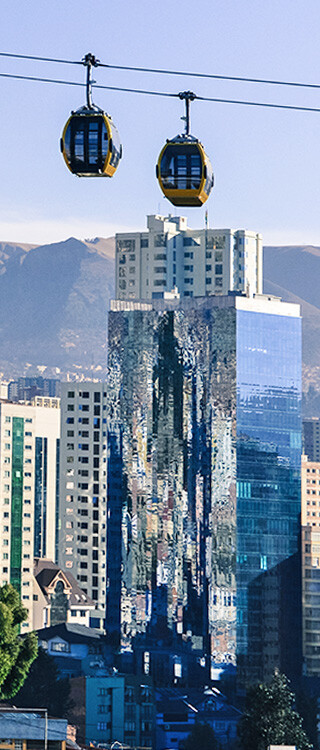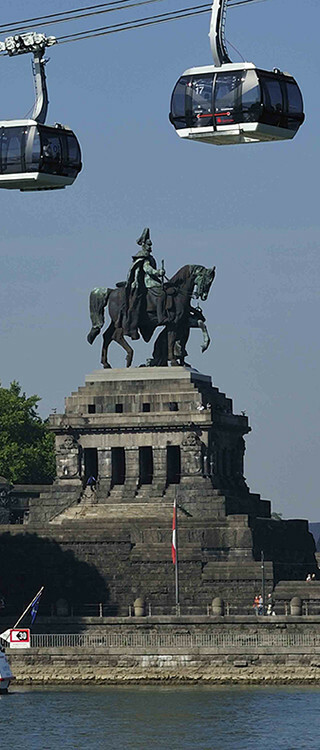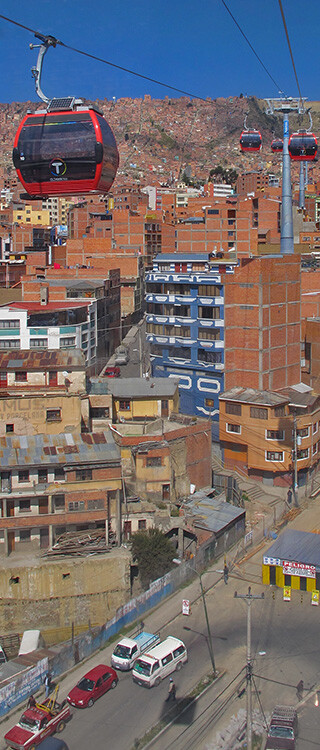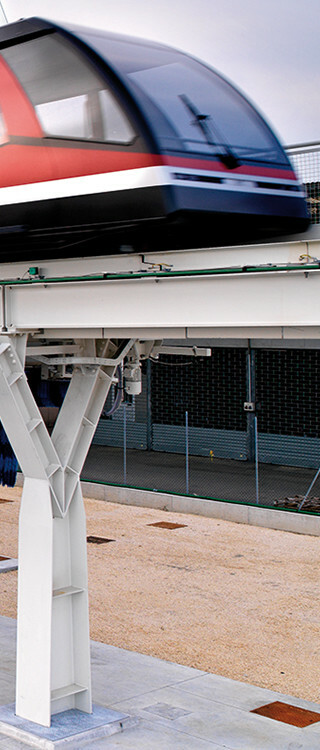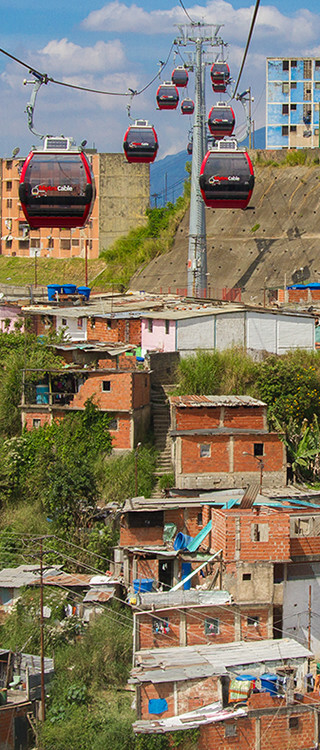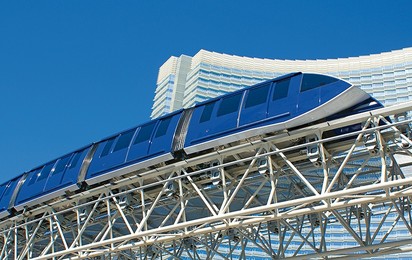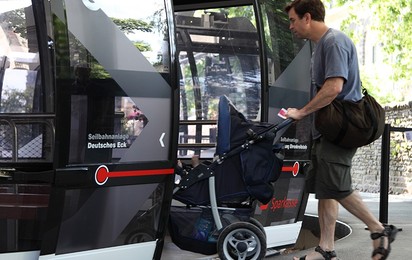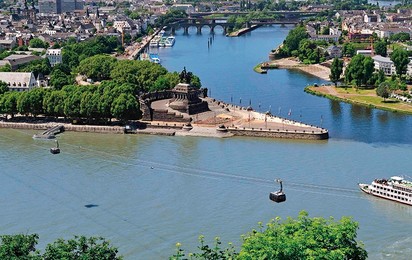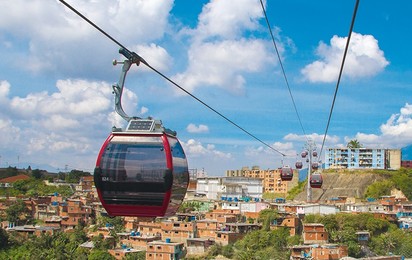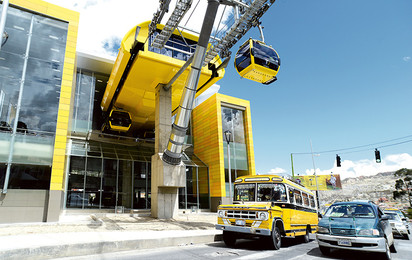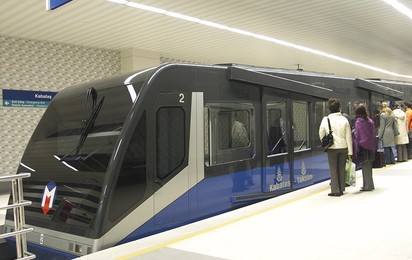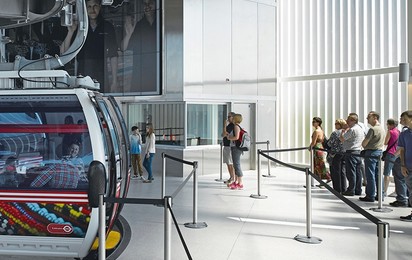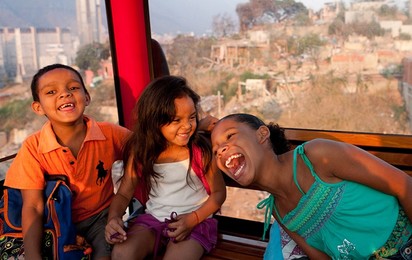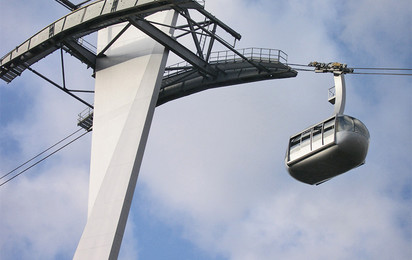ГородНа универсальном транспорте над крышами города
Инновационные системы канатных дорог от компании Доппельмайр/Гаравента предлагают многочисленные преимущества в городской среде. Они с легкостью преодолевают жилые здания, реки и объекты инфраструктуры и беспрепятственно «облетают» любые транспортные пробки. При разумной интеграции в план города для городской канатной дороги не существует никаких границ: дизайн и оснащение подбираются индивидуально в зависимости от культурно-исторических особенностей, местных реалий и предпочтений клиента. Находясь в самом безопасном транспортном средстве, пассажиры могут наслаждаться новыми перспективами города, максимальным комфортом и скоростью доставки в место назначения.
Безбарьерная посадка и высадка оставляют исключительно положительные впечатления от канатной дороги даже у пассажиров в инвалидных креслах, с детскими колясками или велосипедами. Экологически чистые и в то же время высокопроизводительные системы канатных дорог представляют собой эффективное решение проблем с городским транспортом и являются выгодным средством передвижения для любого города.
Сегодня около 55% населения планеты проживает в городах, и эта цифра увеличится до 70% меньше, чем через одно поколение. Из-за постоянно увеличивающихся расстояний, а также незапланированного расширения городов структуры населенных пунктов становятся все сложнее, а существующая инфраструктура транспортных сетей все чаще сталкивается с пределом своих возможностей.
Поэтому мы просто обязаны искать новые подходы для устранения транспортных проблем. Инновационные решения в виде канатных дорог и систем CABLE Liner вносят неоценимый вклад в разрешение сложной ситуации.
Городской транспорт — обзор
- Положительный экологический баланс
- Самое безопасное транспортное средство
- Практически беззвучная работа установки, без выхлопных газов и шума
- Возможность сочетания с другими транспортными средствами
- Высокая степень безотказности, надежности и производительности
- Бюджетная альтернатива существующим транспортным средствам
- Короткие сроки строительства
Более подробную информацию на mobility@doppelmayr.com.
FAQs
При использовании канатной дороги пассажиры или грузы перемещаются от станции к станции в кабинах, креслах или с помощью Т-образных бугелей, которые крепятся на канате, натянутом между опорами. Пассажиры на станциях могут совершать посадку и высадку. Привод канатной дороги электрический, он устанавливается на одной из станций. Основными компонентами системы являются подвески, канат, приводная установка и опоры.
Привод канатной дороги представляет собой электродвигатель, расположенный на центральной станции. Он напрямую воздействует на шкив, который приводит в движение канат и кабины. Тормоза, редукторы и двигатели для отдельных кабин не требуются, поскольку они перемещаются, ускоряются и тормозятся исключительно при помощи каната. Эта технология отличается высокой энергоэффективностью, экологичностью и экономичностью.
Существуют разные концепции исполнения привода: с редуктором или без него. Конкретная концепция выбирается в соответствии с имеющимися условиями.
Существует много систем канатных дорог. Для городской среды лучше всего подходят одноканатные дороги непрерывного движения (гондольные подъемники с отцепляемым зажимом) с кабинами с максимальной вместимостью 10 пассажиров; маятниковые канатные дороги с кабинами вместимостью до 230 человек; трехканатные гондольные подъемники с кабинами вместимостью до 34 пассажиров; фуникулеры или системы Cable Liner.
Системы канатных дорог для использования в зимнее и летнее время, для городских пассажирских и грузовых перевозок: гондольные и кресельные подъемники с отцепляемым зажимом, кресельные подъемники с фиксированным зажимом, маятниковые канатные дороги, трехканатные гондольные подъемники, фуникулеры, движущиеся по рельсам, фунифоры, фунители, комбинированные подъемники, групповые канатные дороги, бугельные подъемники, системы RopeCons, Monoracks и Cable Liner, а также канатные дороги для искусственного вызова схода лавин и для перевозки грузов.
Общая сумма затрат на реализацию проекта канатной дороги составляет лишь долю затрат на другие виды транспорта: 1/3 от стоимости трамвайной линии, 1/10 от стоимости линии метро.
Каждая канатная дорога реализуется по индивидуальному заказу с учетом требований конкретного проекта. Поэтому затраты на монтаж канатной дороги в значительной степени зависят от конкретного проекта и многочисленных параметров проектирования, в частности, от целевого назначения, пропускной способности, высоты вертикального подъема, количества станций, длины, оборудования и др.
Максимальная пропускная способность канатной дороги составляет 6.000 пассажиров в час в каждом направлении.
Для сравнения: для перевозки 10.000 пассажиров в час (по 5.000 на каждое направление) требуется 2.000 автомобилей (полностью загруженных, по 5 пассажиров в каждом) или 200 автобусов (вместимостью 50 пассажиров). А для этого, в свою очередь, необходимо больше пространства (например, для строительства более широких и крупных дорог). Дополнительной проблемой становится создание шума и вредных выбросов.
Канатные дороги являются экологичными. Они приводятся в действие с использованием электричества — без вредных выбросов и шума — и оказывают сравнительно низкое воздействие на окружающую среду. Более экологичным является только перемещение на велосипеде или пешком.
Пример. На одну поездку по канатной дороге (на одного пассажира) потребляется мощность 0,1 кВт. Столько же энергии вы расходуете на сушку волос при помощи фена в течение 5 минут.
Компания Доппельмайр /Гаравента может реализовать практически любую систему канатной дороги в городской среде. Выбор конкретной системы обусловлен той «транспортной проблемой», которую необходимо решить, а также существующими требованиями и предписаниями. Решающими факторами являются такие параметры, как целевое назначение, оборудование, безопасность, перепад высот, доступность, пропускная способность, перевозимые группы пассажиров (велосипеды, инвалидные коляски, детские коляски), уровень комфорта и др.
В целом, канатные дороги обеспечивают оптимизацию грузопотоков и пассажиропотоков, вне зависимости от того, где они находятся: в городах, на горнолыжных курортах или в регионах летнего туризма, а также способствуют бурному развитию туризма.
Поездка на канатной дороге не занимает много времени. Огромным преимуществом является то, что в её работе полностью отсутствуют помехи, создаваемые другими транспортными средствами (автобусами, автомобилями и др.). Это объясняется тем, что перемещение осуществляется на абсолютно другом уровне: кабины канатной системы «пролетают» над дорогами и пробками. Помимо этого, канатная дорога почти не делает поворотов (поскольку двигается в воздухе). Еще одним фактором в пользу этого вида транспорта является его непрерывная работа (без расписания и остановок).
Одноканатная дорога с кольцевым движением обеспечивает транспортировку со скоростью до 7 м/с (25,2 км/ч), а трехканатный гондольный подъемник — со скоростью до 8,5 м/с (30,6 км/ч). Пример использования наземного транспорта: в Вене средняя скорость дорожного движения составляет 21 км/ч, в Берлине — 18 км/ч, в Штутгарте — 17 км/ч. При этом учитывается необходимость соблюдения требований, предписаний и стандартов.
Высота и архитектурный дизайн опор канатной дороги может адаптироваться к существующей ситуации.
Высота опор зависит от системы канатной дороги, а также от необходимой высоты над уровнем земли, расстояния между опорами, топографии местности и других факторов. Например, опоры канатной дороги в Ла-Пасе, Боливия, имеют среднюю высоту около 22 метров.
Кабины канатных дорог имеют разные размеры и разные варианты исполнения. В зависимости от системы, они могут вмещать от 6 пассажиров (одноканатная дорога непрерывного движения) до 34 (трехканатный гондольный подъемник), и даже до 230 (маятниковая канатная дорога). Подвески обеспечивают одноуровневую посадку/высадку, поэтому они доступны для каждого.
Кабины проектируются в соответствии с конкретной целью (например, для перевозки грузов или пассажиров) и другими определяющими параметрами, в частности, требованиями к транспортировке (велосипеды, инвалидные коляски, детские коляски), желаемый уровень комфорта и вместимость.
Канатные дороги открывают качественно новый уровень в развитии транспорта: они обеспечивают перемещение над существующей инфраструктурой, которая может по-прежнему использоваться в жизни города. С легкостью преодолеваются препятствия, в частности, реки и холмы. Канатная дорога осуществляет перевозки вне зависимости от других транспортных потоков, ее работа не нарушается пробками. Более того, канатная дорога функционирует непрерывно, без расписания движения.
Канатные дороги также имеют целый ряд преимуществ, которые хорошо сочетаются с особенностями других видов транспорта. Это означает, что они способны расширить транспортную инфраструктуру города, а также связать важные узлы и места массовых скоплений людей внутри транспортной сети. В результате, канатные дороги становятся идеальным дополнением к существующей транспортной системе и снимают с нее избыточную нагрузку.
По сравнению с другими видами транспорта, проект канатной дороги может быть реализован относительно быстро – в течение примерно двух лет.
Например, станции могут встраиваться в существующие здания, а инфраструктура —прокладываться над дорогами. Для опор требуется небольшое количество пространства, они могут с легкостью вписываться в окружающую среду. На прокладку крупнейшей в мире сети канатных дорог в Ла-Пасе, которая включает в себя 10 линий, потребовалось около шести лет.
Канатные дороги являются безбарьерной средой. Они созданы для транспортировки разных групп людей: пожилых пассажиров, семей с детьми, людей с физическими нарушениями, для перевозки грузов и т. д. В кабинах можно с легкостью найти место для велосипедов, инвалидных и детских колясок, багажа и паллет. Находящиеся на станциях одноуровневые посадочные площадки обеспечивают простоту входа/выхода. Чем больше кабина, тем удобнее перевозить в ней велосипеды и другие предметы.
Каждый проект канатной дороги уникален и разрабатывается индивидуально в соответствии с потребностями отдельной транспортной системы, что является значительным преимуществом этого вида транспорта.
Например, линия канатной дороги может соединить крупные транспортные узлы с общей системой и (или) расширить существующую местную транзитную инфраструктуру, что позволяет существенно снизить интенсивность пробок.
Первым требованием, которому должна соответствовать канатная дорога, является повышение уровня мобильности. Разные системы канатных дорог (с разными параметрами) и их характеристики в разной степени соответствуют потребностям транспортной системы (безбарьерный доступ, высокий уровень комфорта, пропускная способность и др.). Поэтому выбирать систему необходимо с учетом требований к конкретному проекту.
Часто именно предъявляемые требования позволяют определить, какая система канатной дороги является самой подходящей. Одноуровневая посадка/высадка, высокая пропускная способность, нагрузка от конструкций и комфорт для пассажиров являются решающими факторами при выборе системы канатной дороги.
Канатные дороги — вид транспорта, отличающийся высокой адаптивностью. Их конструкции (станции, опоры) могут встраиваться в существующую инфраструктуру (здания, транспортные узлы и др.), а архитектурное решение создается индивидуально для обеспечения гармонии с городским пейзажем.
Канатные дороги также могут связываться с локальной транзитной сетью или встраиваться в нее (например, комплексные станции, кассы и др.). Для опор требуется небольшое количество пространства, а на станциях могут предусматриваться вспомогательные объекты, например, магазины, информационные пункты и комнаты отдыха.
Существуют два типа технического обслуживания:
- Профилактическое техническое обслуживание, которое является непрерывным процессом и выполняется ежедневно, еженедельно или по мере необходимости с учетом времени использования компонента. Оно проводится в нерабочее время, например, в ночное. Проведение профилактического технического обслуживания не требует отключения и простоя.
- Для планового технического обслуживания требуется кратковременный простой. Это необходимо для проведения технического обслуживания крупных деталей или замены тех компонентов, у которых истек срок службы.
Современные канатные дороги оснащаются сложными системами, которые контролируют все компоненты. Данные об эксплуатации в сочетании с графиком проведения технического обслуживания позволяют оптимизировать процесс работы и снизить количество и продолжительность периодов простоя. Тщательно спланированная замена каната может быть проведена за 3–5 дней. Такое же время необходимо для технического обслуживания путей и переключателей в метро или на трамвайной линии.
Одноканатные гондольные системы с отцепляемым зажимом (Monocable Detachable Gondola, MGD) могут работать при ветровых нагрузках до 60–70 км/ч. Трехканатные системы разрешено эксплуатировать при скорости ветра до 100 км/ч. На время грозы работа канатной дороги прекращается.
Необходимые меры предосторожности предпринимаются заранее, на основании прогноза погоды. Это позволяет исключить любые риски, связанные с погодными условиями. Современные системы прогнозирования и контроля погодных условий, в частности, такие, которые используются в аэропорту, гарантируют безопасную эксплуатацию с минимальными периодами простоя.
Частота, с которой кабины прибывают на станцию, обусловлена пропускной способностью, размером кабин и длиной канатной линии. Можно обеспечить прибытие кабин на станцию с интервалом в 12 секунд (при движении вперед).
После прибытия кабины на станцию зажим открывается и скорость движения кабины замедляется до 0,2 м/с, обеспечивая тем самым комфортную высадку и посадку всех пассажиров, в том числе людей с ограниченной подвижностью или использующих инвалидную коляску.
В целом, системы канатных дорог имеют такую же надежность при чрезвычайных ситуациях, как и другие системы общественного транспорта, в частности, метро, трамвайные линии, автобусы. Акты вандализма, преднамеренное повреждение или поджог могут произойти везде.
Современные системы эвакуации обеспечивают возможность высадки пассажиров на станции для исключения необходимости их спуска по канату. Кабины не имеют двигателей, что снижает количество поломок, связанных с выходом двигателя из строя.
Система эвакуации Доппельмайр позволяет переместить все кабины к ближайшей станции, где пассажиры могут из них выйти. Спуск пассажиров по канату является крайней мерой, даже в случае возникновения чрезвычайной ситуации.
Для современных канатных дорог может обеспечиваться коэффициент эксплуатационной доступности, равный 99,5 %.
Размер парковки зависит от технических параметров системы, в частности, от её длины, пропускной способности и скорости. Пример: для канатной дороги длиной 4 км с пропускной способностью 4.000 пассажиров в час / направлении, скоростью 6,0 м/с при использовании 10-местных кабин необходимо около 160 кабин. Существуют 3 типа парковки: одноуровневая, станционная и подземная. Для 300 кабин (плюс резервные), а также необходимого пространства для технического обслуживания, требуется складское помещение размером 60 м x 50 м, то есть 3.000 квадратных метров.
Расстояние зависит от разных факторов: типа канатной системы (одноканатная или трехканатная), топографии местности и пропускной способности системы.
Обычно расстояние между опорами составляет 150–300 метров для одноканатной системы и 800–1.500 метров для трехканатной.
Для составления требований к подрядчику необходимо определить все технические характеристики системы. Обычно изготовление компонентов может быть поручено сертифицированным компаниям, сферой деятельности которых является производство металлоконструкций.
В случае возникновения вопросов, ответов на которые нет в данном разделе, свяжитесь с нами по электронной почте mobility@doppelmayr.com. Мы с удовольствием Вам поможем!
